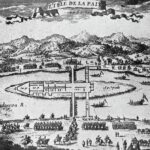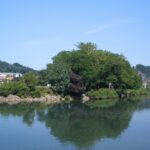That corner of Europe that every six months changes… country
When the Thirty Years’ War ended, on November 7, 1659, France and Spain decided that a small island in the Bidasoa River would become a condominium, but on a time basis
Six months in France, six months in Spain. Yes, because in Europe there is a place that… changes country throughout the year, that is never entirely transalpine or Iberian. Right on the border between the two countries, just before the Bidasoa River flows into the Atlantic Ocean near the Bay of Biscay, in the middle of the waterway there is an unusual wooded rock.

About two hundred meters long, the island has an extension of about three thousand square meters and is the result of an alluvial deposit: although it is a few tens of meters from the mainland, it is accessible only by boat or by swimming, moreover when this is (rarely) allowed.
It was in that place that on November 7th 1659 the representatives of the two sovereigns met to sign the Treaty of the Pyrenees, which put an end to the Thirty Years’ War, one of the bloodiest and most exhausting conflicts in European history.
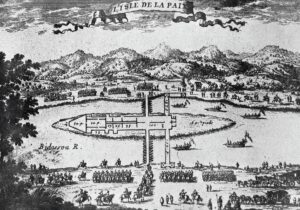
The agreement signed was the culmination of a series of twenty-four meetings between the negotiators of the two empires: Luis de Haro, Great of Spain, and Cardinal Giulio Mazzarino, Prime Minister of France.
To commemorate the reaching of a compromise, a monolith was built at the center of this river cliff, which still exists today. But in that place, over the centuries, were also organized exchanges of prisoners and important marriages of state between the Spanish or Austrian crowns, on the one hand, and the French, on the other.
In 1659, Louis XIV of Bourbon met there his future wife, Maria Theresa of Habsburg; a year later, always on the Island of the Beans, the Austrian noblewoman greeted her father, Philip IV, and most of the Spanish court, before entering the territory of France and officially becoming the consort of the “Sun King”.
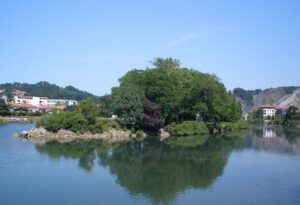
Also Louis XV saw on the wooded cliff of the river Bidasoa for the first time the one who could have become his wife, Mariana Victoria of Spain. The two never married, however; he married Maria Leszczyńska, she chose the future Joseph I of Portugal.
However, one problem remained. Since it could not be divided in half, being less than forty meters wide at its widest point, the Island of Pheasants became (and still is) a “condominium”, or a territory over which several nations exercise their jurisdiction: even today it is the only European example of joint sovereignty, as well as the smallest in the world and the one that resists more time.
On behalf of the French state, the condominium is managed by the commander of the Adour naval base and two delegates, who bear the honorary title of viceroy; for the Spanish state, the only delegate is the commander of the Hondarribia naval base.
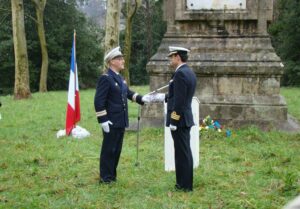
Every six months the exceptional ceremony of the transfer of sovereignty takes place, the only time you can set foot on the island: from the first of February to the 31st of July the Island of Pheasants belongs to Spain and is managed by the municipality of Irun (Basque Country); from the first of August each year it belongs to the French municipality of Hendaye (New Aquitaine), and remains so until the 31st of January…







